Where the techniques of Maths
are explained in simple terms.
Exponential functions - Basic understanding.
Test Yourself 1 - Solutions.
- Algebra & Number
- Calculus
- Financial Maths
- Functions & Quadratics
- Geometry
- Measurement
- Networks & Graphs
- Probability & Statistics
- Trigonometry
- Maths & beyond
- Index
| Basic manipulation. | 1. Simplify (7x)4 - 34.
|
2. Simplify  . .
|
3. Expand  . .
22y - 2×2yex + e2x = 4y - 2y+1ex + e2x |
4. Simplify (2 × 3x)×(3 × 2x)
6 × 3x2x = 6×(3×2)x = 6x+1 |
|
5. 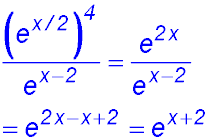 |
6. For f(x) = 2ex + 3e2x- 1, evaluate
f(2) - f(0) = (2e2 + 3e4 - 1) - (2 + 3 - 1) =2e2 + 3e4 - 5 |
|
| Graphs. | 7. Both growth curves:
|
8. 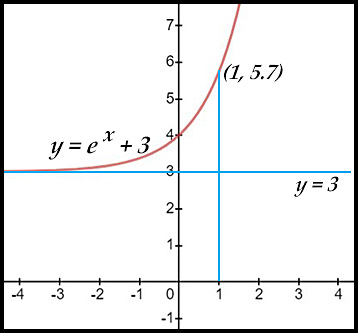
The basic exponential growth curve The transformation of "+ 3" moves the curve up so that now it has y = 3 as its asymptote rather than the x-axis. The y intercept is at y = e 0 + 3 = 4. |
9. 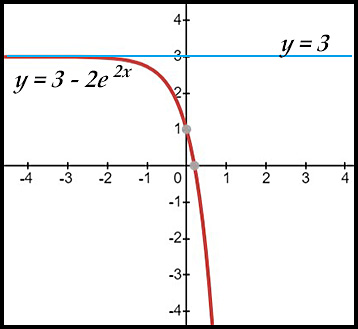
The negative sign in front of the exponential term turns the graph of the decay curve upside down. The addition transformation of +3 moves the curve up 3 units so the asymptote rises from y = 0 to y = 3. The coefficient and index both of 2 make the curve fall more rapidly. |
10. 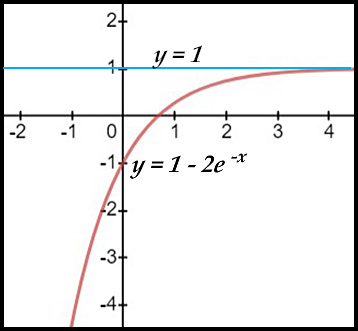 . .
The basic exponential growth curve The addition transformation of +1 moves the curve up 1 unit so the asymptote rises from y = 0 to y = 1. The coefficient of 2 makes the curve rise more quickly as x increases. |
|
11. 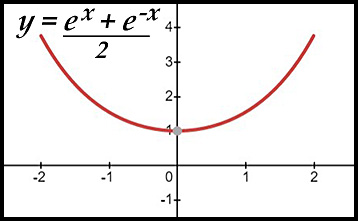
The catenary adds both exponential functions together. Hence the y intercept equals (1 + 1)÷ 2 = 1. The addition also means that the curve on both sides of the y axis has a larger y value than each of the two basic exponential curves. Clearly also the function is even. |
12. 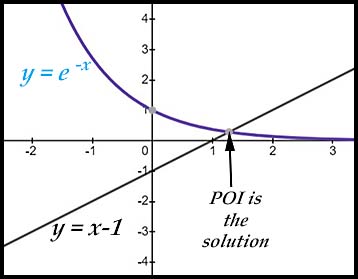
At the intersection of the two curves, the y values are the same. Hence we replace the exponential function in the combined equation and put the equation - 0 as there is no difference between the y values. f(x) = e-x - x + 1 = y - x + 1 = 0 So we obtain y = x - 1 As there is only one point of intersection, the combined equations have exactly one root. |
|
13. 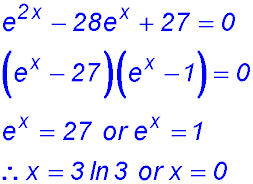 |
14. 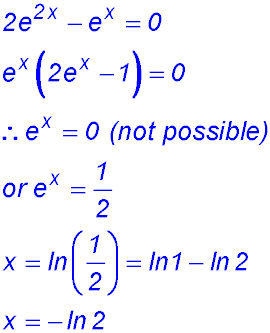 |
|
15. 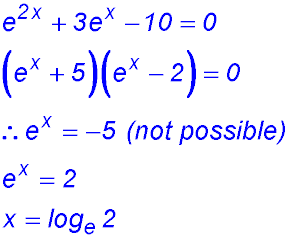 |
16. 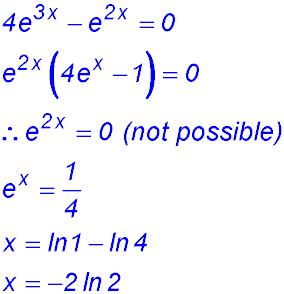 |

